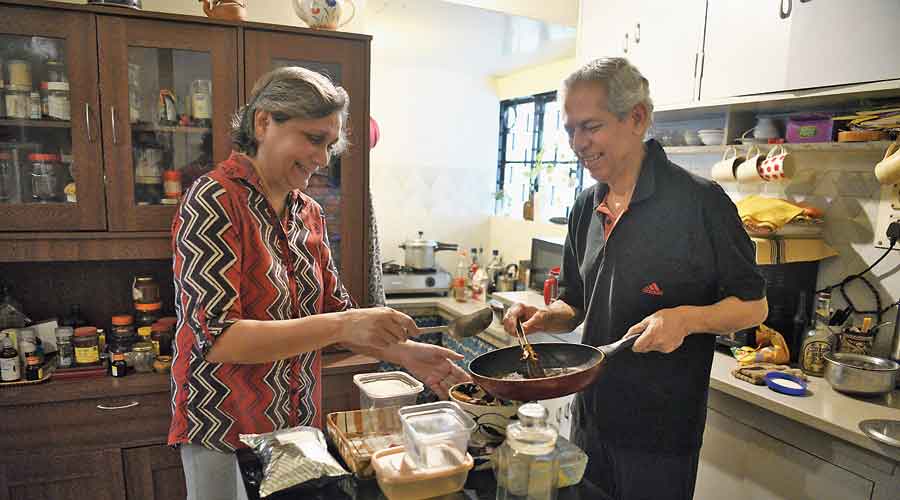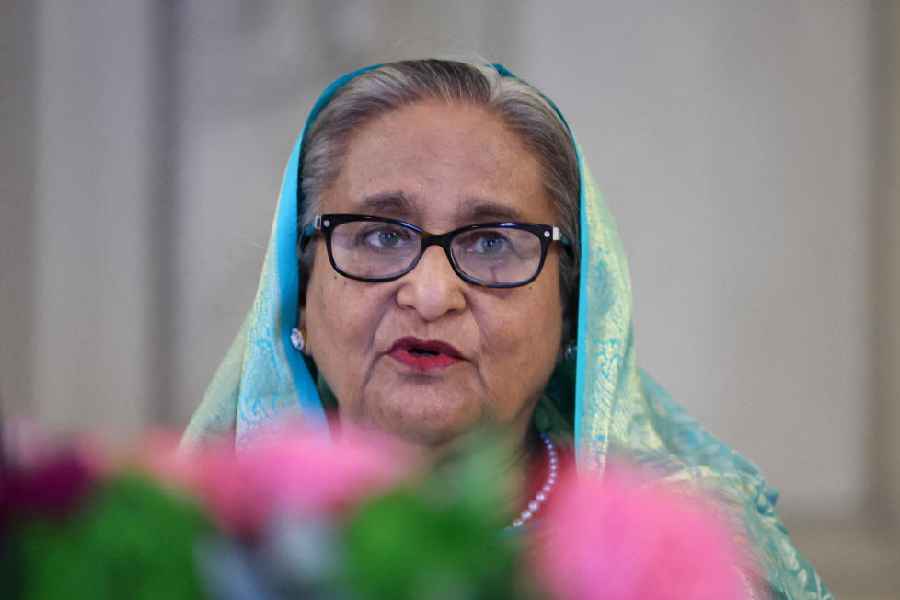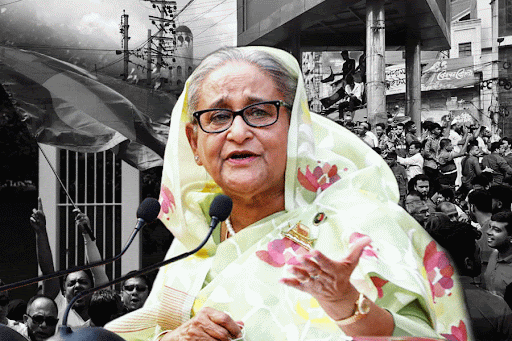Now that we have all learned to bake banana bread and stir-fry frittata during the lockdown, maybe we should ask ourselves why, if the kitchen is such an important place for both men and women, was it hardly ever seen before the pandemic? Where was it all along except in Instagram, where designer kitchens are presided over by even more designer hashtag-owners?
Calcutta is food-obsessed. Yet even a century earlier in a prosperous Bengali household, the kitchen would be hidden away. It would compete with the other most-neglected, least-ventilated places: the bathroom and the toilet, which would often be separate (for ritualistic sanitation rules that defined what was impure), the antur ghor (the birthing shed where children of the family would be delivered; birthing would generate impurity) and the cowshed.
The kitchen would, with the places mentioned above, be on the margins of the household, literally, because cooking and cooked food would be impure in various ways according to the elaborate rules of etho or sakri, which basically explain the method by which impurity is transmitted through food. Cooked rice is etho, so is food that one has already eaten. The kitchen, though it fed the family, had to be kept in its place.
In a smaller, poorer house, often the kitchen had no location at all. A portable unun (oven) would be lit anywhere, in a corner of a room, in the courtyard, in the space outside the room.
In how many novels, short stories, films and paintings can you recall the kitchen being shown clearly.
In the Saratchandra novel Mejdidi, where the food Hemangini (Mejdidi) cooks for Keshto is powerfully identified with her capacity to love, a lot happens in the kitchen and around it. But do you remember the kitchen? In Leela Majumdar’s Padipishir Barmibaksho, Padipishi, the redoubtable aunt, who can make the fiercest robber quake, cooks a very memorable ghee-bhaat. But what about the kitchen? And Majumdar was not a stranger to the kitchen: she celebrated food.
Rassundari Debi, the first Bengali woman whose autobiography was published, taught herself to read and write at the age of 26 hidden in the kitchen.
One exception to the tradition is Tapan Sinha’s film Galpa Holeo Satyi, where the kitchen is rightfully claimed as the pivot of the household, far more than just a site of kitchen politics.
World literature is not much different. Formidable women, such as Marquez’s matrons, or Proust’s household staff, or the characters of Dickens, operate in their formidable kitchens, but how many of these are memorable? In Alice in Wonderland, the wonderfully distorted reflection of Victorian England, among other things, the cook keeps pouring in so much pepper into the pot of soup that is being prepared for the Duchess’s baby that the soup begins to look lethal. The kitchen turns into a vicious place even as the literature of the age idealises the home and the hearth.
And till recently, in how many of our homes was the kitchen a place that was visited by all?
Not in many. Till men began to pour into it since lockdown, learning how to make jalebis. Before that it was that featureless place which, if not dark, dingy and oppressive, was almost invisible. A bit, sometimes, like the women in the house. The invisibility of the kitchen is about the invisibility of the production of food within the domestic sphere, a work traditionally done by women. The undermining of cooking at home coincides with the undermining of women and the privileging of men’s work outside home.
In one of the most important sociological essays ever written, The Origin of the Family, Private Property and the State (1884), Friedrich Engels speaks about what he considers the moment of the subjugation of women. He imagines a long period of human existence when women enjoyed a superior status, because children were known by their mothers.
But then came domestication of animals and the breeding of herds and unsuspected wealth and private property, all of which the men wanted to control and pass on to their own children. Men took control.
“The overthrow of mother right was the world historical defeat of the female sex,” says Engels. About two thousand years ago or so, monogamy was invented, the perfect social tool to identify paternity. (Monogamy, reminds Engels, was always monogamy for women, not men.) In the course of time, the domestic sphere inhabited by women lost its status and so did their work: food production and reproduction. We are back to the equivalence of the antur and the henshel (kitchen). Never mind if the two are the most fundamental workplaces that sustain mankind. We know, after the lockdown.
Only with food magazines and television did things begin to change a bit in the 20th century. Julia Child changed the kitchen forever with first her book on French cooking and her large, robust presence on American television. Much later, in India we had Tarla Dalal and then Sanjeev Kapoor — and the modular kitchen. And the exhaust fan in the kitchen — a minor revolution.
Then came the social media, which turned food sexy. Now breakfasts in Indian homes also have to be “yummy”!
Then came the lockdown. Now that there is hope of a vaccine, and the initial euphoria about home-cooked biryani is over and fewer men are being spotted among the pots and pans, we suspect we are back to square one.












